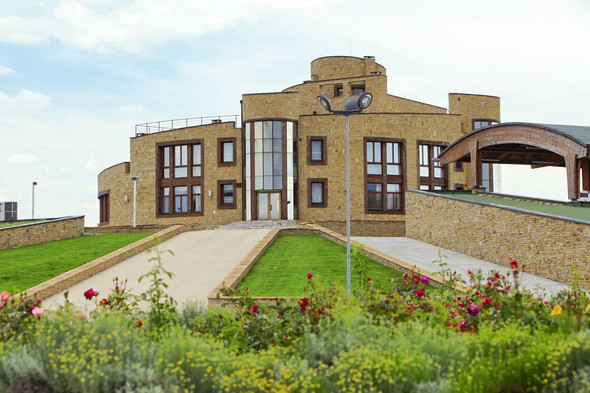What does Barolo have to do with Bulgarian wine? Not a great deal, I thought, until I visited the Edoardo Miroglio winery just outside the village of Elenovo. Here, in fact, I found two things.
Edoardo Miroglio, an Italian from Piedmont bought Tenuta Carretta in Roero in the 1980s. The family comes from Alba, and, as his son Franco says, they have more wine in their blood than blood! The family’s main business is in fashion and textiles and they decided to invest in Bulgaria in 1999. Edoardo fell in love with the wine and the culture of the area, and in fact is now a Bulgarian citizen.
He was inspired by the fact that wine-making has been traditional in the region since Thracian times, the recipe being passed from father to son for generations, so decided to follow in their footsteps. He did some personal research, i.e. drinking, and then began to seek a suitable piece of land, buying the property in 2000. The idea initially was just to make wine for themselves, as with so many, but the land grew to 150 hectares, so a little much for just themselves, and of course they have some Barolo too!
At first they brought the technology and people from Italy, but now also have a local oenologist, one of the top ten in Bulgaria. Their aim is to mix Bulgarian tradition with Italian knowledge. The first variety planted was Pinot Nero, aka Pinot Noir, followed by a variety of other international varieties. Indeed, they are renowned for the quality of their Pinot Noir; they have 20 hectares of it, half Burgundy clones for the red and half Champagne for their traditional method sparkling wines, vinified for both rosé and white. I have to point out here that the rosé is particularly delicious! In 2005, they expanded with Bulgarian varieties Mavrud and Melnik, and in 2008 further with Bouquet and Rubin. And that, by the way, is the second connection with Barolo – Rubin is a Bulgarian crossing of Syrah and Nebbiolo. The Bouquet is vinified like a Boujealais to produce their Bouquet Nouveau.
The winery and boutique hotel sit atop a hill, standing watch over the surrounding vineyards. The spiral geometry of the winery was inspired by the history of the place, located near an ancient Thracian site. The winery itself is carved into the hill, vertically constructed so that they can use as little mechanisation as possible. 16 varieties, both autochtonous and local, are planted on the plains and hills surrounding the winery. The vineyards are cultivated using traditional Piedmontese viticulture, which are adapted to the peculiarities of the terroir. They also want to preserve the local panorama and wildlife, so one plot, separated from the rest by a patch of woodland, is now being cultivated organically. They wish to extend this next year, with a further two hectares of small-berry Mavrud. Maybe it’s a bit of a gamble, they say, but they see this as the future.






